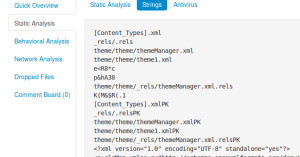Navigating the digital landscape can sometimes feel like traversing a minefield, especially when it comes to encountering those pesky pop-up scams on Windows. In this article, we will delve into the art of avoiding and removing these unwelcome intrusions, empowering you to protect yourself and your device from the clutches of fraudulent schemes.
Recently, Fortect has become increasingly popular as a reliable and efficient way to address a wide range of PC issues. It's particularly favored for its user-friendly approach to diagnosing and fixing problems that can hinder a computer's performance, from system errors and malware to registry issues.
- Download and Install: Download Fortect from its official website by clicking here, and install it on your PC.
- Run a Scan and Review Results: Launch Fortect, conduct a system scan to identify issues, and review the scan results which detail the problems affecting your PC's performance.
- Repair and Optimize: Use Fortect's repair feature to fix the identified issues. For comprehensive repair options, consider subscribing to a premium plan. After repairing, the tool also aids in optimizing your PC for improved performance.
Understanding Different Types of Pop-Up Scams
Pop-up scams can be a major annoyance and pose a serious threat to your computer’s security. It’s essential to be aware of the various types of pop-up scams and how to avoid and remove them.
One common type is rogue security software, which pretends to be a legitimate antivirus program but is actually malware. These scams often display alarming pop-ups that trick users into purchasing unnecessary software or providing personal information. If you encounter such a pop-up, do not click on any buttons or provide any information. Instead, close the pop-up immediately using the Task Manager or by closing the web browser.
Another type is the technical support scam, where scammers pose as tech support personnel and claim that your computer is infected or has a problem. They may use URL redirection to redirect you to a fake website or display a pop-up with a fake security alert. Remember, Microsoft will never contact you unsolicited. If you receive such a pop-up or call, hang up or close the browser immediately.
To protect yourself from pop-up scams, ensure that you have a reliable antivirus software installed, such as Microsoft Defender Antivirus. Keep your operating system and applications up to date, and be cautious when clicking on links or downloading files. Additionally, enable the Windows Firewall and use a secure web browser like Microsoft Edge.
By staying informed and taking necessary precautions, you can avoid falling victim to pop-up scams and keep your computer and personal information secure.
Identifying and Avoiding Pop-Up Scams
Pop-up scams can be a major nuisance and a threat to your online security. These scams often use deceptive tactics to trick you into providing personal information or downloading malicious software. To protect yourself from pop-up scams, follow these steps:
1. Ignore and close pop-up windows: If you encounter a pop-up window claiming to be a security warning or alert, do not click on any links or buttons. Instead, close the window using the “X” button or by pressing Alt+F4.
2. Use trusted antivirus software: Install and regularly update reliable antivirus software like Microsoft Defender Antivirus. This will help detect and remove any potential threats on your system.
3. Enable pop-up blockers: Enable pop-up blockers in your web browser, such as Microsoft Edge. This will prevent most pop-up windows from appearing in the first place.
4. Be cautious with downloads and links: Avoid clicking on suspicious links or downloading files from unfamiliar websites. Stick to reputable sources and always double-check the URL before entering any personal information.
5. Keep your operating system and applications up to date: Regularly install updates for your operating system, web browser, and other software. These updates often include security patches that can protect you from known vulnerabilities.
Dealing with Fake Pop-Ups: Removal and Prevention
If you encounter a fake pop-up on your Windows device, it’s important to know how to remove it and prevent future occurrences. These pop-ups can be a result of rogue security software or a technical support scam, often using social engineering tactics to trick you into taking action. Here’s what you can do:
1. Close the pop-up immediately. Do not click on any buttons or links within the pop-up.
2. Use Task Manager (Windows) to force quit the web browser or application displaying the pop-up.
3. Run a full scan with your Windows Defender Security Center or other reputable antivirus software to check for any potential infections.
4. Keep your Windows Firewall enabled to block unauthorized access to your device.
5. Be cautious when clicking on pop-up ads or downloading software from unfamiliar sources. Stick to trusted websites and app stores.
6. Regularly update your operating system and applications to ensure you have the latest security patches.
Resolving Access Issues with Blocked Websites
If you’re experiencing access issues with blocked websites, it’s important to resolve them quickly to ensure your online security. Here are some steps to help you avoid and remove Windows pop-up scams:
1. Check your internet connection and ensure it’s stable.
2. Clear your web browser’s cache and cookies to eliminate any temporary issues.
3. Disable any browser extensions or add-ons that may be causing the problem.
4. Update your antivirus software and run a full system scan to detect and remove any potential threats.
5. If you encounter a pop-up scam, do not click on any ads or provide personal information.
6. Use Task Manager (Windows) to close any suspicious processes or programs.
7. Enable Windows Defender Security Center to protect your computer from malware and phishing attempts.
8. If the issue persists, contact Microsoft Support for further assistance.







